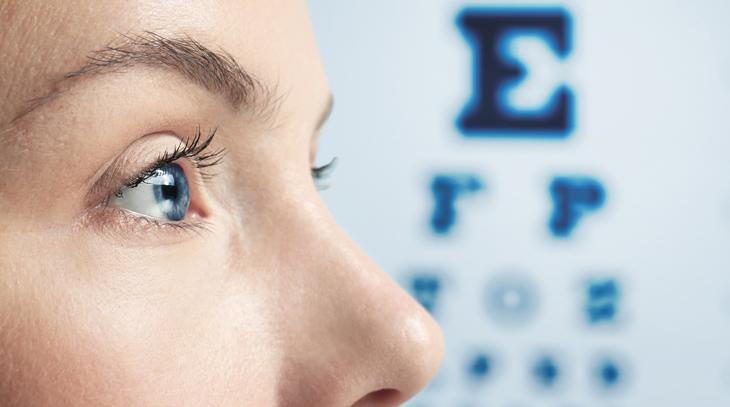Location
What Conditions Do Ophthalmologists Treat?

Most people do not think about their vision when they can see clearly. They do begin to get concerned, however, when they start experiencing blurry vision, halos, double vision, or pain. Not only can such problems be annoying and make it hard to read, drive or perform daily activities as usual, but they can be indications of a larger issue. When potential symptoms of an eye condition present themselves, an ophthalmologist can assist in addressing the underlying issue.
A range of diseases of the eye, if left untreated, can result in vision loss. The good news is that in many instances this does not need to happen. From cataracts to keratoconus and more, ophthalmologists are able to adeptly diagnose and treat such conditions, helping restore vision and reduce associated discomfort. If you or someone you know has been experiencing changes in their eyesight, it may be time to learn more about eye conditions.
Cataracts
People 65 years of age and up are often diagnosed with cataracts, an all too common eye condition. A cataract can develop in one or both eyes and occurs when the lens of the eye clouds over. Cataract symptoms include poor night vision, blurry vision, faded colors, and a glare around sunlight, headlights, and bright lights. A comprehensive eye exam is used to identify the condition.
Treatment options can vary for individuals with cataracts. Patients in the early stage may only require a change to their prescription. Cataract surgery is recommended when a patient cannot perform everyday activities due to vision loss.
Traditional or laser surgery will be performed to remove the affected cloudy lens and replace it with a manufactured one. Laser-assisted surgery offers greater accuracy and a faster recovery period for patients, but not all patients may be good candidates. This makes it necessary to review all treatment options and any concerns with an ophthalmologist.
Strabismus (Eye Misalignment)

This condition can happen to the eyes of people of any age. Strabismus is an eye disorder where the eyes are misaligned. One or both eyes can turn in different directions, not looking at an object simultaneously. The affected eye(s) can turn upward, downward, inward, or outward.
The main problem is that this results in different messages being sent to the brain and will impact the vision development in the affected eye. When the condition goes untreated, a patient’s condition can result in “lazy eye” or amblyopia.
Symptoms may not occur consistently but can include crossed eyes, double vision, eyes not moving together, vision loss, and issues with depth perception. The most common types of strabismus are esotropia, exotropia, hypotropia, and hypertropia, differing in name based on the direction of misalignment of the eye.
An ophthalmologist treats the diagnosed form of strabismus with the goal of improving eye alignment. After a thorough evaluation, an individualized treatment plan may include eye exercises, eyeglasses, the incorporation of a prism in a pair of glasses, or eye muscle surgery.
Any underlying conditions such as a cataract or ptosis are addressed before undertaking eye muscle surgery. Eye muscle surgery is seen as the last resort, especially for children.
Keratoconus
Although the cause may remain unknown, many believe that the tendency in individuals to develop keratoconus is congenital. Keratoconus is a condition impacting the cornea. The cornea’s middle will thin and bulge outward.
As the condition progresses, vision problems occur. Symptoms of this condition include halos or poor night vision, sensitivity to light, and double or blurry vision. Early detection allows for more treatment options.
Depending on the stage of the condition, treatment options vary. Surgery is recommended when needed but many patients yet to develop severe keratoconus benefit from specialty contact lenses.
Others may want to investigate the possibility of stopping the progression of keratoconus with corneal collagen cross-linking. More advanced cases may require a cornea transplant. Ophthalmologists often treat a range of conditions affecting the cornea and external eye.
Glaucoma
This disease, often a result of high intraocular pressure, directly impacts the optic nerve, affecting the transmission of images. It is possible for glaucoma to result in vision loss and blindness.
Glaucoma symptoms include a loss of peripheral vision, sudden pain in the eye, cloudy or reduced vision, and vomiting or nausea. Open-angle glaucoma is the most common type of glaucoma and a patient may not exhibit any symptoms in the early stage, making regular eye exams important in noting any changes to the health of the eye and vision quality.
Glaucoma can affect both the young and old, with congenital glaucoma seen in babies and pigmentary glaucoma occurring in younger, nearsighted patients.
Based on the type of glaucoma and its severity, an ophthalmologist will discuss specific treatment alternatives. Daily application of medicated eye drops or pills can help reduce pressure at the earlier stages of glaucoma. Laser surgery may be used to help drain fluid easily. Glaucoma surgery or traditional surgery, like trabeculectomy, may also be called for in order to lower pressure or drain fluid, respectively.
Protect Your Eyes and Vision

Regular comprehensive eye exams and vision care are important as the quality of your vision can change over time. Eye disorders and conditions can occur in anyone throughout the stages of life. Hereditary conditions, diet, diabetes, physical trauma, and other diagnoses are some of the factors that can lead to the development of an eye condition.
Some eye diseases may show little, if any, symptoms at the outset, such as early-stage open-angle glaucoma. It is useful to stay on top of your eye health. This often makes for a wider range of less invasive options available to treat or manage an eye disease or condition and reduce the possibility of permanent vision loss.
Allowing a condition to go untreated can often result in more severe symptoms when they do present themselves and often a greater degree of vision impairment. An ophthalmologist has the expertise and technology on hand to treat a variety of eye disorders, enabling you to see better and with more ease. Speak to your ophthalmologist to understand more about common eye disorders and what you can do to maintain your eye health.

Most people do not think about their vision when they can see clearly. They do begin to get concerned, however, when they start experiencing blurry vision, halos, double vision, or pain. Not only can such problems be annoying and make it hard to read, drive or perform daily activities as usual, but they can be indications of a larger issue. When potential symptoms of an eye condition present themselves, an ophthalmologist can assist in addressing the underlying issue.
A range of diseases of the eye, if left untreated, can result in vision loss. The good news is that in many instances this does not need to happen. From cataracts to keratoconus and more, ophthalmologists are able to adeptly diagnose and treat such conditions, helping restore vision and reduce associated discomfort. If you or someone you know has been experiencing changes in their eyesight, it may be time to learn more about eye conditions.
Cataracts
People 65 years of age and up are often diagnosed with cataracts, an all too common eye condition. A cataract can develop in one or both eyes and occurs when the lens of the eye clouds over. Cataract symptoms include poor night vision, blurry vision, faded colors, and a glare around sunlight, headlights, and bright lights. A comprehensive eye exam is used to identify the condition.
Treatment options can vary for individuals with cataracts. Patients in the early stage may only require a change to their prescription. Cataract surgery is recommended when a patient cannot perform everyday activities due to vision loss.
Traditional or laser surgery will be performed to remove the affected cloudy lens and replace it with a manufactured one. Laser-assisted surgery offers greater accuracy and a faster recovery period for patients, but not all patients may be good candidates. This makes it necessary to review all treatment options and any concerns with an ophthalmologist.
Strabismus (Eye Misalignment)

This condition can happen to the eyes of people of any age. Strabismus is an eye disorder where the eyes are misaligned. One or both eyes can turn in different directions, not looking at an object simultaneously. The affected eye(s) can turn upward, downward, inward, or outward.
The main problem is that this results in different messages being sent to the brain and will impact the vision development in the affected eye. When the condition goes untreated, a patient’s condition can result in “lazy eye” or amblyopia.
Symptoms may not occur consistently but can include crossed eyes, double vision, eyes not moving together, vision loss, and issues with depth perception. The most common types of strabismus are esotropia, exotropia, hypotropia, and hypertropia, differing in name based on the direction of misalignment of the eye.
An ophthalmologist treats the diagnosed form of strabismus with the goal of improving eye alignment. After a thorough evaluation, an individualized treatment plan may include eye exercises, eyeglasses, the incorporation of a prism in a pair of glasses, or eye muscle surgery.
Any underlying conditions such as a cataract or ptosis are addressed before undertaking eye muscle surgery. Eye muscle surgery is seen as the last resort, especially for children.
Keratoconus
Although the cause may remain unknown, many believe that the tendency in individuals to develop keratoconus is congenital. Keratoconus is a condition impacting the cornea. The cornea’s middle will thin and bulge outward.
As the condition progresses, vision problems occur. Symptoms of this condition include halos or poor night vision, sensitivity to light, and double or blurry vision. Early detection allows for more treatment options.
Depending on the stage of the condition, treatment options vary. Surgery is recommended when needed but many patients yet to develop severe keratoconus benefit from specialty contact lenses.
Others may want to investigate the possibility of stopping the progression of keratoconus with corneal collagen cross-linking. More advanced cases may require a cornea transplant. Ophthalmologists often treat a range of conditions affecting the cornea and external eye.
Glaucoma
This disease, often a result of high intraocular pressure, directly impacts the optic nerve, affecting the transmission of images. It is possible for glaucoma to result in vision loss and blindness.
Glaucoma symptoms include a loss of peripheral vision, sudden pain in the eye, cloudy or reduced vision, and vomiting or nausea. Open-angle glaucoma is the most common type of glaucoma and a patient may not exhibit any symptoms in the early stage, making regular eye exams important in noting any changes to the health of the eye and vision quality.
Glaucoma can affect both the young and old, with congenital glaucoma seen in babies and pigmentary glaucoma occurring in younger, nearsighted patients.
Based on the type of glaucoma and its severity, an ophthalmologist will discuss specific treatment alternatives. Daily application of medicated eye drops or pills can help reduce pressure at the earlier stages of glaucoma. Laser surgery may be used to help drain fluid easily. Glaucoma surgery or traditional surgery, like trabeculectomy, may also be called for in order to lower pressure or drain fluid, respectively.
Protect Your Eyes and Vision

Regular comprehensive eye exams and vision care are important as the quality of your vision can change over time. Eye disorders and conditions can occur in anyone throughout the stages of life. Hereditary conditions, diet, diabetes, physical trauma, and other diagnoses are some of the factors that can lead to the development of an eye condition.
Some eye diseases may show little, if any, symptoms at the outset, such as early-stage open-angle glaucoma. It is useful to stay on top of your eye health. This often makes for a wider range of less invasive options available to treat or manage an eye disease or condition and reduce the possibility of permanent vision loss.
Allowing a condition to go untreated can often result in more severe symptoms when they do present themselves and often a greater degree of vision impairment. An ophthalmologist has the expertise and technology on hand to treat a variety of eye disorders, enabling you to see better and with more ease. Speak to your ophthalmologist to understand more about common eye disorders and what you can do to maintain your eye health.
Monday
9:00 am - 5:00 pm
Tuesday
9:00 am - 5:00 pm
Wednesday
9:00 am - 5:00 am
Thursday
9:00 pm - 5:00 am
Friday
9:00 pm - 5:00 am
Saturday
Closed
Sunday
Closed

